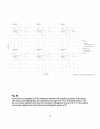Association of gut microbiota with post-operative clinical course in Crohn's disease
- PMID: 23964800
- PMCID: PMC3848607
- DOI: 10.1186/1471-230X-13-131
Association of gut microbiota with post-operative clinical course in Crohn's disease
Abstract
Background: The gut microbiome is altered in Crohn's disease. Although individual taxa have been correlated with post-operative clinical course, global trends in microbial diversity have not been described in this context.
Methods: We collected mucosal biopsies from the terminal ileum and ascending colon during surgery and post-operative colonoscopy in 6 Crohn's patients undergoing ileocolic resection (and 40 additional Crohn's and healthy control patients undergoing either surgery or colonoscopy). Using next-generation sequencing technology, we profiled the gut microbiota in order to identify changes associated with remission or recurrence of inflammation.
Results: We performed 16S ribosomal profiling using 101 base-pair single-end sequencing on the Illumina GAIIx platform with deep coverage, at an average depth of 1.3 million high quality reads per sample. At the time of surgery, Crohn's patients who would remain in remission were more similar to controls and more species-rich than Crohn's patients with subsequent recurrence. Patients remaining in remission also exhibited greater stability of the microbiota through time.
Conclusions: These observations permitted an association of gut microbial profiles with probability of recurrence in this limited single-center study. These results suggest that profiling the gut microbiota may be useful in guiding treatment of Crohn's patients undergoing surgery.
Figures



References
-
- Neut C, Bulois P, Desreumaux P, Membré J-M, Lederman E, Gambiez L, Cortot A, Quandalle P, van Kruiningen H, Colombel J-F. Changes in the bacterial flora of the neoterminal ileum after ileocolonic resection for Crohn’s disease. Am J Gastroenterol. 2002;97:939–946. doi: 10.1111/j.1572-0241.2002.05613.x. - DOI - PubMed
-
- Bibiloni R, Mangold M, Madsen KL, Fedorak RN, Tannock GW. The bacteriology of biopsies differs between newly diagnosed, untreated, Crohn’s disease and ulcerative colitis patients. J Med Microbiol. 2006;55(Pt 8):1141–1149. - PubMed
Publication types
MeSH terms
Substances
Grants and funding
LinkOut - more resources
Full Text Sources
Other Literature Sources
Medical

